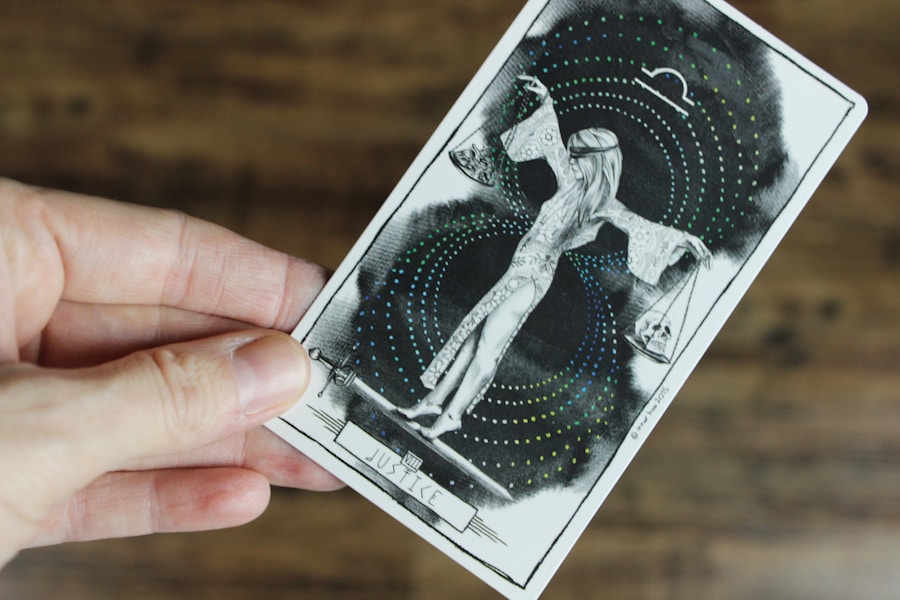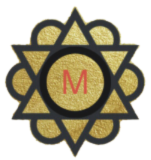
Change is an intrinsic part of life, and the tarot serves as a profound tool for understanding and navigating this ever-present reality. Each card in the tarot deck encapsulates various aspects of human experience, including the inevitability of change. The tarot does not merely predict the future; rather, it reflects the dynamic nature of existence, illustrating how circumstances evolve and how individuals can respond to these shifts.
The cards act as mirrors, revealing the internal and external transformations that shape our lives. By engaging with the tarot, one can gain insights into the cycles of change, recognizing patterns that may have previously gone unnoticed. The concept of change in tarot is particularly emphasized through the Major Arcana, which represents significant life events and spiritual lessons.
These cards often signify pivotal moments that catalyze transformation, urging individuals to confront their fears, embrace new opportunities, or let go of outdated beliefs. For instance, The Tower card symbolizes sudden upheaval and chaos, yet it also heralds the potential for renewal and growth. By understanding the role of change within the tarot framework, practitioners can cultivate a mindset that welcomes transformation rather than resisting it.
This perspective fosters resilience and adaptability, essential qualities for navigating life’s unpredictable journey.
Key Takeaways
- Change is a natural and necessary part of life, and the tarot can help us understand and navigate its role in our journey.
- The Major Arcana cards represent powerful energies and archetypes that can help us embrace and harness the energy of change in our lives.
- The Minor Arcana cards provide practical guidance and advice for adapting to and navigating through the changes we encounter.
- The Court cards can serve as mirrors for personal growth and transformation, offering insights into how we can develop and evolve through change.
- Intuition plays a crucial role in using the tarot to navigate change, allowing us to tap into our inner wisdom and guidance as we face transitions and challenges.
- By creating a regular tarot practice focused on resilience and flexibility, we can develop the tools and mindset needed to embrace change and thrive in the face of uncertainty.
Embracing the energy of the Major Arcana cards
The Major Arcana cards are often viewed as the heart of the tarot, representing profound archetypes and universal themes that resonate deeply with the human experience. Each card carries its own unique energy, inviting individuals to explore their inner landscapes and confront the changes that life presents. For example, The Fool embodies new beginnings and the spirit of adventure, encouraging one to take risks and embrace the unknown.
This card serves as a reminder that change often requires a leap of faith, urging individuals to trust in their instincts and embark on new journeys with an open heart. Conversely, cards like Death and The Hanged Man illustrate the necessity of surrendering to change. Death signifies transformation and the end of one phase to make way for another, while The Hanged Man encourages a shift in perspective.
Both cards highlight that embracing change often involves letting go of attachments and preconceived notions. By engaging with these energies, individuals can learn to navigate transitions with grace and acceptance. The Major Arcana invites introspection, prompting individuals to reflect on their own life narratives and recognize how they can harness these archetypal energies to facilitate personal growth.
Adapting to change with the guidance of the Minor Arcana cards

While the Major Arcana provides insight into significant life events, the Minor Arcana offers practical guidance for everyday situations and challenges. These cards are divided into four suits—Cups, Pentacles, Swords, and Wands—each representing different aspects of life. The Minor Arcana serves as a roadmap for adapting to change on a more granular level, helping individuals navigate daily fluctuations with clarity and purpose.
For instance, the Suit of Cups is associated with emotions and relationships. When faced with change in personal connections, drawing a card from this suit can provide valuable insights into how to approach these shifts. A card like the Two of Cups may suggest fostering communication and understanding during times of transition, while the Five of Cups could indicate feelings of loss that need to be acknowledged before moving forward.
Similarly, the Suit of Swords deals with thoughts and challenges; drawing a card from this suit can illuminate mental barriers that may hinder one’s ability to adapt to change. The Ace of Swords might signify a breakthrough in clarity or a new perspective that empowers one to face challenges head-on.
Utilizing the Court cards for personal growth and transformation
The Court cards—Page, Knight, Queen, and King—represent different personality types and approaches to life’s challenges. They embody various aspects of human behavior and can serve as powerful guides for personal growth and transformation during times of change. Each Court card reflects a unique energy that can be harnessed to navigate transitions effectively.
For example, Pages symbolize curiosity and a willingness to learn. When faced with change, embodying the energy of a Page can encourage an open-minded approach, allowing one to explore new possibilities without fear or judgment. Conversely, Knights represent action and movement; they inspire individuals to take decisive steps toward their goals amidst uncertainty.
A Knight of Wands may urge one to pursue passions with enthusiasm, while a Knight of Pentacles emphasizes diligence and practicality in adapting to new circumstances. Queens and Kings embody mastery over their respective suits, offering wisdom and guidance during transformative periods. A Queen of Cups encourages emotional intelligence and compassion when dealing with personal relationships affected by change, while a King of Swords advocates for clear communication and rational decision-making in challenging situations.
By recognizing which Court card resonates with their current circumstances, individuals can tap into these archetypal energies to foster personal growth and navigate change with confidence.
Incorporating the element of intuition in navigating change
Intuition plays a crucial role in navigating change effectively, serving as an internal compass that guides individuals through uncertainty. The tarot is not solely about interpreting symbols; it also invites practitioners to connect with their intuitive selves. Each card drawn can evoke feelings, thoughts, or insights that may not be immediately apparent through logical reasoning alone.
By cultivating this intuitive connection, individuals can enhance their ability to respond to change in a way that aligns with their true selves. When engaging with tarot for guidance during times of transition, it is essential to create a space conducive to intuition.
As cards are drawn, practitioners should pay attention not only to traditional meanings but also to their personal reactions and feelings associated with each card. For instance, if The Moon appears during a reading about an uncertain situation, it may evoke feelings of fear or confusion but also hints at hidden truths waiting to be uncovered. Trusting these intuitive responses can lead to deeper insights and more authentic decision-making.
Moreover, integrating practices such as visualization or affirmations alongside tarot readings can further enhance intuitive clarity. Visualizing desired outcomes or affirming one’s ability to adapt can create a powerful synergy between conscious intention and intuitive guidance. This holistic approach empowers individuals to embrace change as an opportunity for growth rather than a source of anxiety.
Creating a tarot practice for resilience and flexibility

Establishing a consistent tarot practice can significantly enhance one’s resilience and flexibility in facing life’s changes. A structured approach allows individuals to engage regularly with their cards, fostering a deeper understanding of their meanings while cultivating a sense of familiarity with the energies they represent. This practice can take various forms—daily draws, weekly spreads, or themed readings focused on specific areas of life.
One effective method is to create a “Change Spread,” specifically designed to explore how one can navigate transitions more effectively. This spread might include positions such as “What do I need to let go of?” “What opportunities lie ahead?” and “How can I best support myself during this time?” By intentionally focusing on change within the context of a tarot reading, individuals can gain clarity on their current situation while identifying actionable steps toward adaptation. In addition to structured readings, incorporating journaling into one’s tarot practice can deepen insights gained from each session.
Writing reflections on drawn cards allows individuals to process emotions associated with change while tracking their personal growth over time. This practice not only reinforces lessons learned but also serves as a valuable resource for future reference when facing similar challenges. Ultimately, creating a tarot practice centered around resilience involves cultivating an attitude of curiosity and openness toward change.
By embracing the lessons offered by both Major and Minor Arcana cards while tapping into intuitive insights, individuals can develop a robust framework for navigating life’s inevitable transitions with grace and confidence.
If you are interested in exploring other mystical tools for guidance and insight, you may want to check out the article on the mystery and magic of crystal balls.
Just like tarot cards, crystal balls can provide valuable insights and recommendations for navigating change and embracing new opportunities.
FAQs
What are tarot cards?
Tarot cards are a deck of 78 cards that are often used for divination, spiritual guidance, and self-reflection. Each card has its own symbolism and meaning, and can be interpreted in various ways by a tarot reader.
How can tarot cards help with embracing and adapting to change?
Tarot cards can provide insight and guidance on how to navigate change and transition in life. They can offer perspective, clarity, and advice on how to approach and adapt to new circumstances.
What are some common tarot cards that may appear in a reading about embracing change?
Common tarot cards that may appear in a reading about embracing change include The Fool, The Tower, Death, The Wheel of Fortune, and The Hanged Man. Each of these cards carries its own symbolism and can offer guidance on how to approach change.
How can someone use tarot cards to adapt to change?
One can use tarot cards to adapt to change by seeking guidance and insight from a tarot reader, or by learning to read the cards themselves. By reflecting on the messages and symbolism of the cards, individuals can gain a deeper understanding of how to navigate change in their lives.
Are tarot cards a form of fortune-telling?
While tarot cards are often associated with fortune-telling, they are also used for self-reflection, spiritual guidance, and personal growth. The interpretation of tarot cards is not deterministic, and the cards can be used as a tool for gaining insight and understanding rather than predicting the future.






